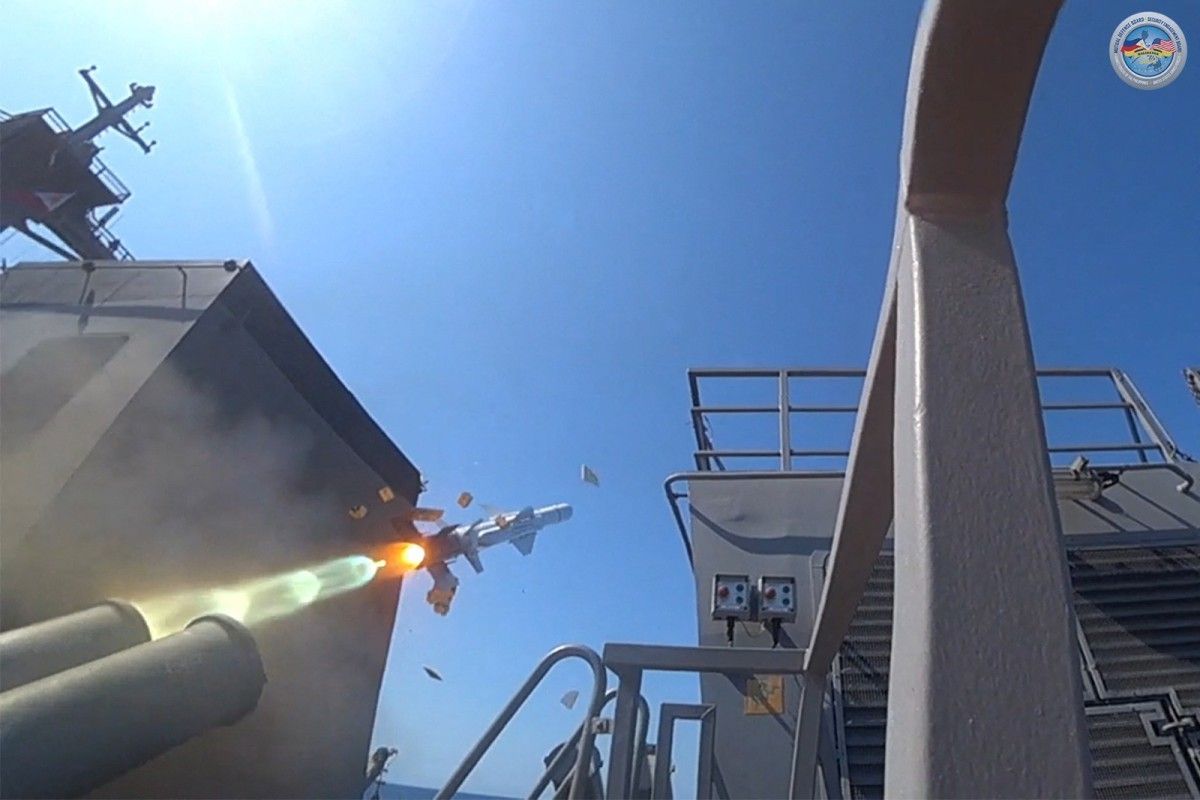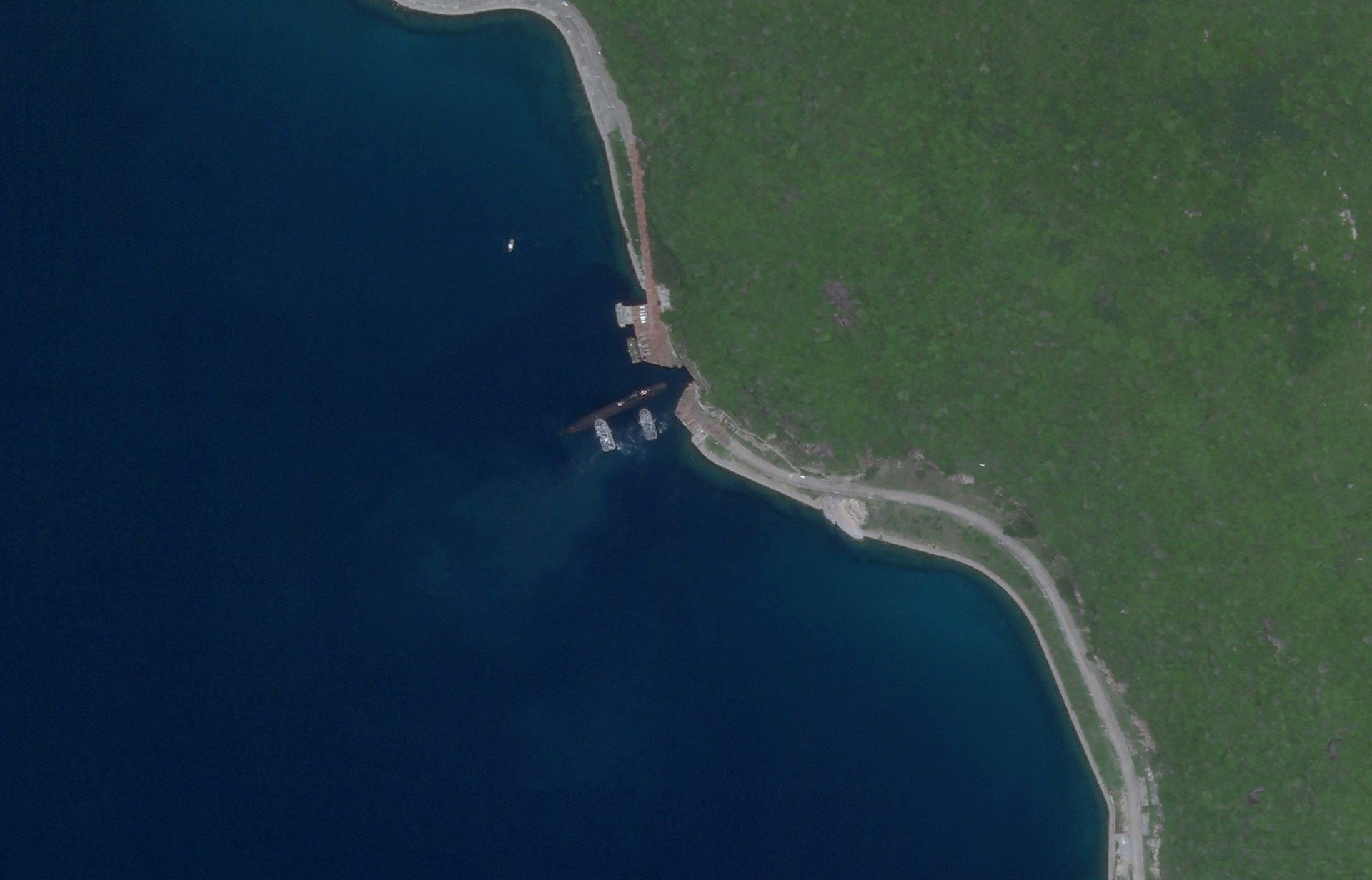How a US-China nuclear showdown threatens the Philippines

MANILA, Philippines — A nuclear conflict between the United States and China in the South China Sea could spill over to the Philippines, even if it is not a direct target, an analyst warns.
The Philippines' proximity to Taiwan and the South China Sea as well as the US troops' access to the Philippine military bases raise the risk of the country being drawn into a conflict between the two superpowers, said Elizabeth Suh, research associate at the German Institute for Foreign and Security Affairs.
“There is a scenario of nuclear escalation within the South China Sea, not because the US would use nuclear weapons to defend the Philippines, but rather because direct conflict between China and the United States about their strategic interests and their nuclear forces could happen,” Suh said, during a public lecture on Wednesday, September 18.
“The Philippines would not be a target, but the use of nuclear weapons targets indiscriminately," the researcher added. She explained that the "humanitarian consequences" of a nuclear exchange in the region would affect the country.
China has expanded its nuclear arsenal faster than any other country. In July, it said it had abandoned its nuclear arms control talks with the US to protest Washington’s arms sales to Taiwan.
Located around 160 kilometers from Batanes, Taiwan is even closer to the Philippines than China and has become an important foreign policy issue to Manila.
RELATED: US senators urge Biden for 'visible' response to help Philippines thwart China
A 'stone's throw' from Taiwan
Observers believe the growing threat of a Chinese military takeover of Taiwan remains the most likely flashpoint in the region. Beijing sees the self-ruled island as a rogue nation and has not ruled out the use of force to bring it under its control.
The Philippines' decision to grant the US access to four additional military bases under the Enhanced Defense Cooperation Agreement (EDCA) in 2023 drew sharp criticism from China. The Chinese ambassador in Manila even warned that the new sites were "just a stone's throw away from Taiwan."
Suh said the Philippines’ strategic location within the western Pacific explains why the US — the main arms provider and a key ally of Taiwan — has been intent on expanding its military presence in the country.
The US sees the Philippines as a key location for monitoring and potentially countering China’s military activities, especially its submarine patrols, through an anti-access / area denial strategy, Suh said.
“Entry-exit denial is key for deterring nuclear weapons use in the West Pacific, for example, because it means that the United States tries to deny China's operations of its submarines within the South China Sea,” she added.
Defense Secretary Gilbert Teodoro assured House lawmakers in August that the Philippines’ plans to broaden the interpretation of its Mutual Defense Treaty with the US will not include the opening of new military bases for US troops.
RELATED: No new EDCA sites being eyed, DND chief says
Possibility of escalation ‘unlikely’ but never zero
Suh went through the possible scenarios that would fire up Beijing and Washington.
Threats to Beijing’s submarine force around Hainan Island. China currently fields six submarines that are not only nuclear-powered but can also launch nuclear missiles—turning them into stealthy, mobile weapons of mass destruction. These submarines are stationed close to Hainan Island, where China is also expanding its naval base.
“When Beijing sees its submarine force around its Hainan Island threatened, there could be scenarios of escalation,” Suh said.

Taking Taiwan by force. Suh said any conflict between Beijing and Washington over Taiwan “however that might be” could involve the use of nuclear weapons.
“The South China Sea would also be a theater where China launches its nuclear missiles,” she said.
Suh said that while these possible scenarios are “not likely” to happen, in the world of nuclear deterrence, countries need to prevent an escalation of conflict by proving that the consequences would be serious.
“In nuclear deterrence, you have to threaten with what you have, with what's so destructive and unimaginable and make that threat very credible in order for that never to happen,” the geopolitical expert added.
Nuclear risks in Asia-Pacific
The United States is obligated to defend the Philippines, its longest treaty ally in the region, from armed attacks. But unlike Japan and South Korea, the Philippines lacks a formal guarantee that the US would use nuclear weapons in its defense, Suh said.
Like Manila, Taipei remains outside the US’ nuclear umbrella, although there have been talks of bringing it inside, according to a Taipei Times report.
While the Philippines is part of the Southeast Asian nuclear weapons-free zone, which prohibits it from acquiring or testing nuclear weapons, the agreement does not cover the transport of nuclear weapons through the region.
This means the Philippines cannot prevent China or the US from transporting their nuclear weapons through the region.
“That's not a promise the Philippines or any other Southeast Asian nations have given. And I believe that's also a very realistic promise, given the limit of influence of prohibiting that,” Suh said.
This is why the danger lies not in Southeast Asian countries violating their nuclear commitments but in neighboring states and countries using regional waterways for nuclear trade and transport, the analyst said.
For instance, if South Korea develops nuclear weapons, it would be a "big problem for the entire region and beyond," Suh said. The security risk grows if other countries like Japan or Taiwan follow suit.
If these countries decide to pursue nuclear weapons, they could potentially transport the necessary technologies through the waterways around the Philippines.
"These are all big if's because the risk of proliferation by these particular countries, not only depends on countries like North Korea and others being ready to supply certain technologies, but of course, the demand matters a lot," Suh said.
"If they wanted to, they could," she added.
- Latest
- Trending































